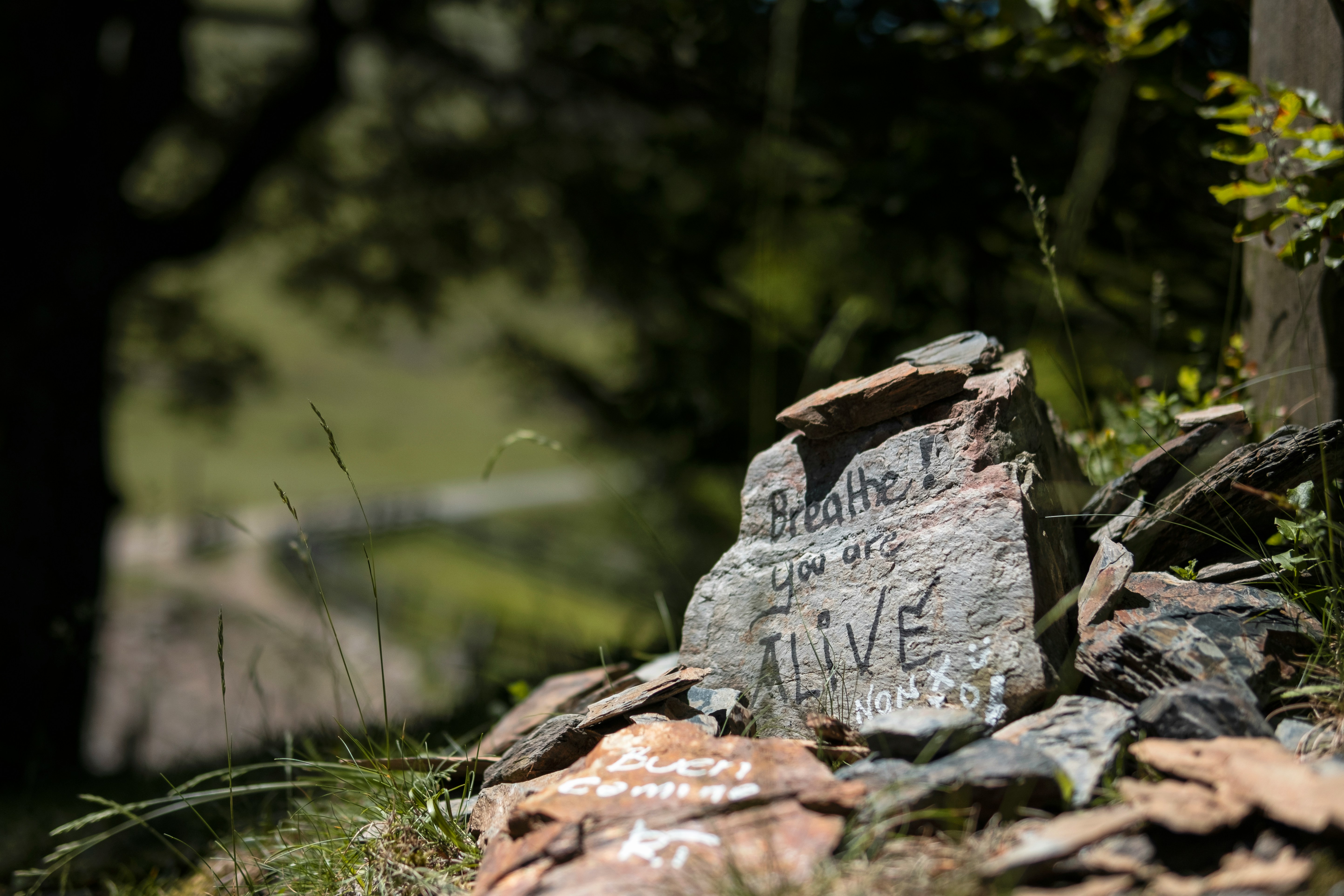Breathing exercises can help reduce stress or anxiety – and in some cases de-escalate panic attacks. Research has shown that mindful breathing practice reduces heart rate and blood pressure. This demonstrates the effectiveness of these interventions, not just on our mental wellbeing but also our physical. These exercises can be done on their own or in combination with yoga, stretching, or other grounding techniques. Anyone can practice these anywhere, making them an accessible tool for immediate stress intervention.
Box Breathing
Imagine a square. Your breath is measured in the sides of said square. Every stage is equal. Pick a side to begin and inhale, dragging your finger along the line or imagining a ball of light traveling along it. When you get to the corner, hold your breath the same length of time along the next side. At the next corner, release your breath, again keeping time with the line. The final side is another breath hold. Each side should be about 4-8 seconds, depending on what feels comfortable to you. This is box breathing. It requires your attention to maintain even breaths which serves as a distraction and helps you regain control.
Belly Breathing
Belly breathing is exactly what it sounds like. Many of us breathe shallow when in distress. Making sure we are breathing deeply and fully can help reduce chest tightness and induce greater relaxation. Our diaphragm will be doing most of the work here, taking some stress off of the lungs. Simply breathe slowly and deeply, feeling your stomach expand and deflate with each breath. You can place a hand on your stomach to make sure you are breathing deep enough. This is a technique that comes naturally to some and may take practice for others. Those who have played wind instruments will know the importance of diaphragmatic breathing as this technique is what allows musicians to produce more force behind their air and go longer without taking a breath.
Cyclic Breathing
Cyclic breathing is my personal favorite exercise. Many of us do it naturally while stressed without even realizing. Breath in through the nose and out through the mouth. Make sure you are releasing all of your air on the exhale. During hyperventilation, we take in too much air and don’t breathe out enough. This can (ironically) cause that feeling of suffocation. By taking in a more limited airflow and exhaling more, we can reverse this. Many runners also practice cyclic breathing to recover after a run.
Pranayama Breathing
Pranayama breathing is a collection of breathing exercises that originated in India as a part of yoga practice. Mind-body connection is the main focus in these exercises. Many exercises also focus on breathing as a manifestation of our “life energy”. You can find a variety of exercises ranging from relaxation to empowerment. For this reason, pranayama is also popular among those dealing with depression or other concerns outside of anxiety. Some practitioners pair pranayama with spiritual practices such as meditation or prayer. This may be especially appealing to those who benefit from such rituals.
Why Breathing Exercises Work
Hyperventilation is a common symptom of panic attacks. By controlling breathing, we are able to prevent this and restore the oxygen and carbon dioxide levels in our blood and lungs. Research has also shown that deep breathing encourages blood flow which can help loosen tight muscles and reduce heart palpitations. All of this will make us feel physically better and in turn help us relax. Breathing exercises also have a mental factor in grounding. Grounding can be described as distracting your brain with your current surroundings (or a few specific details of your surroundings) instead of thinking about stressors. This is one of the quickest and most effective ways to de-escalate a panic attack and can be a useful relaxation technique for those dealing with chronic stress. Breathing is something we do everyday and simply focusing on it is one of our most powerful and safe tools to combat anxiety.
To learn more about breathing exercises or the science of breathing and stress, see the following sources…
Deep breathing exercise at work: Potential applications and impact (National Library of Medicine)
The Science of Breathing (University of New Mexico – Len Kravitz, Ph.D)
Why Breathing Is So Effective At Reducing Stress (Harvard Business Review)
8 Breathing Exercises to Try When You Feel Anxious (Healthline)
